
PUMPA - SMART LEARNING
எங்கள் ஆசிரியர்களுடன் 1-ஆன்-1 ஆலோசனை நேரத்தைப் பெறுங்கள். டாப்பர் ஆவதற்கு நாங்கள் பயிற்சி அளிப்போம்
Book Free DemoTypes of reproduction in plants:
Based on the structural complexity, physiology and habitat of the organisms in general reproduction is of two types.
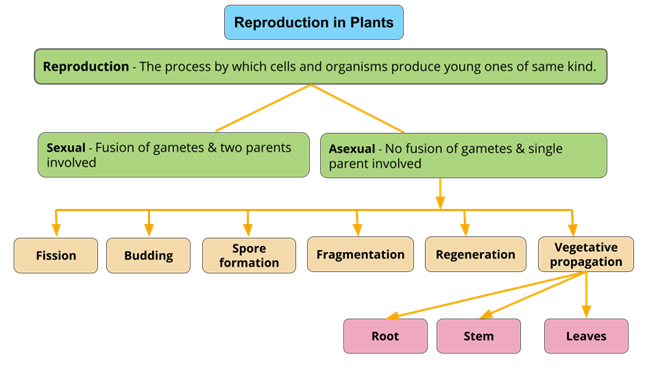
Types of reproduction
Asexual reproduction:
In this method, there will be no fusion of gametes. It is mostly seen in single celled-organisms. The types are follows:
- Fission
- Budding
- Fragmentation
- Vegetative propagation
- Spore formation.
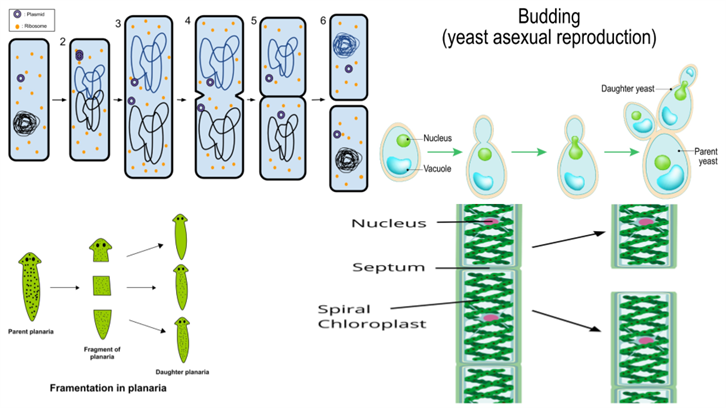
Types of asexual reproduction: Clockwise from top left: Binary fission, Budding, Regeneration, and Fragmentation
Sexual reproduction:
It is the process of development of new individuals through the formation and fusion of gametes. It is also known as amphimixis or amphigony.

Sexual reproduction in plants
Types of asexual reproduction:
What is asexual reproduction?
Asexual reproduction is the production of an offspring by a single parent without the development and union of gametes.
It simply involves mitotic cell divisions and does not include meiosis. Asexual reproduction produces offspring that are not only identical to their parents but also precise duplicates of them.
Asexual reproduction occurs by the formation of a spore. In fungi and bacteria, this is the most prevalent way to reproduce asexually.
Fission:

Binary fission
In this mode of reproduction, the parent cell divides into two daughter cells, and each cell develops into a new adult organism.
It is seen in organisms like amoeba and bacteria.
Budding:
In this process, a daughter individual is formed from a small bulb-like projection on the parent body called a bud. The bud detaches from the parent body and forms a new daughter cell.
It is seen in organisms such as Yeast and Hydra.
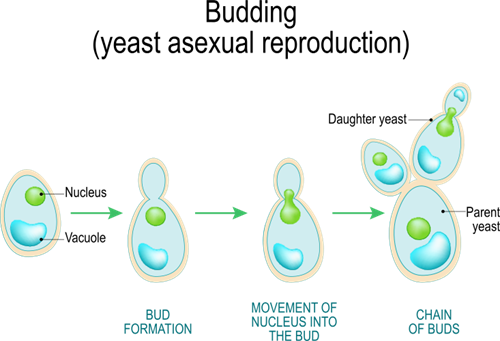
Budding in Yeast
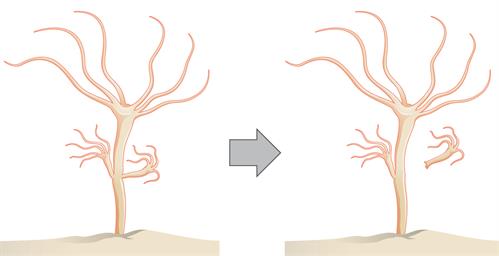
Budding in hydra
Regeneration:
The ability of an individual organism's lost bodily components to regenerate into a whole new organism is known as regeneration.
A specialised mass of cells carries it out.
A specialised mass of cells carries it out.
It is observed in organisms such as Hydra and Planaria.
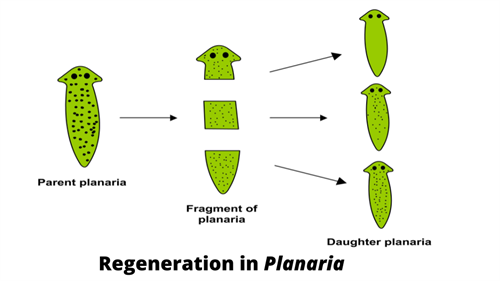
Important!
Fission, budding, and regeneration will be discussed in detail under animal reproduction.
Reference:
https://commons.wikimedia.org/wiki/File:Binary_Fission_2.svg
https://commons.wikimedia.org/wiki/File:Figure_43_01_02.jpg